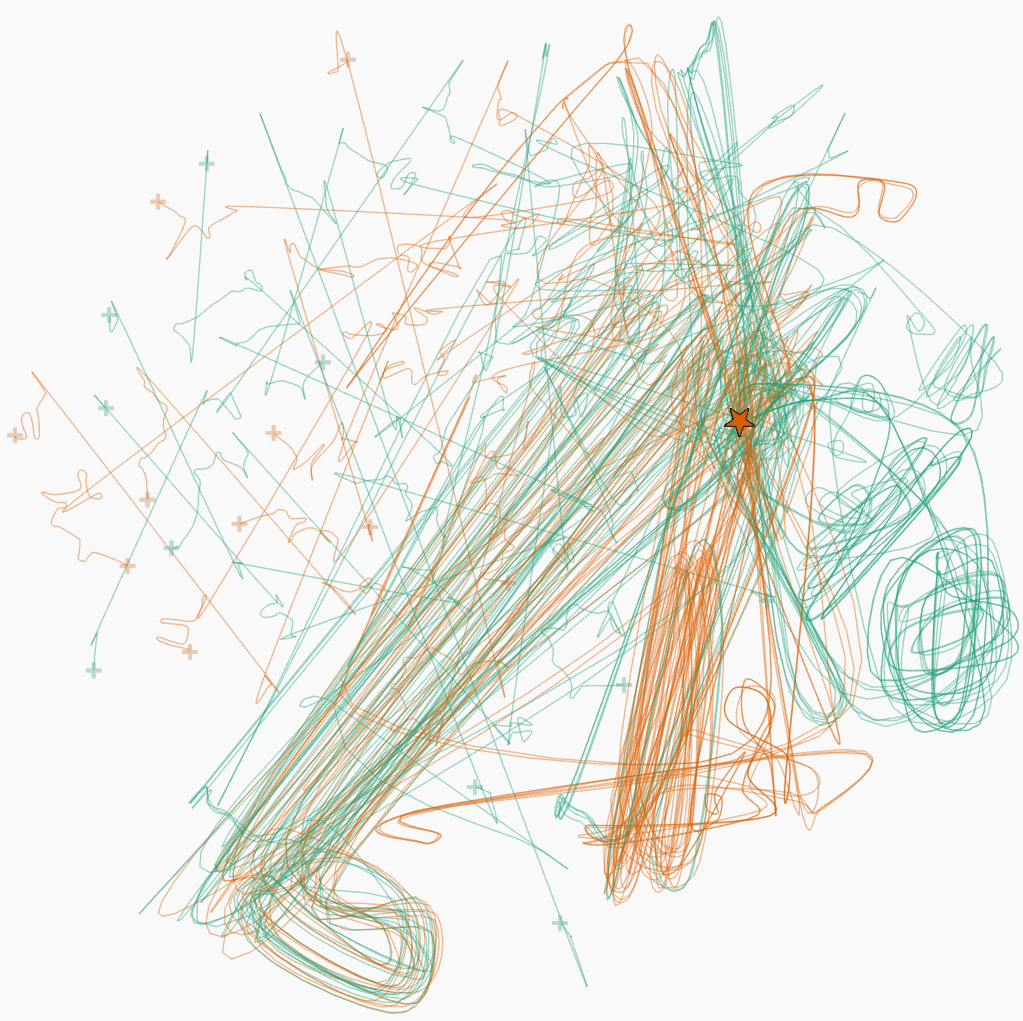Data¶
To be able to explore paths in a projected space, you need to pick a problem/algorithm/model that consists of multiple states that change interatively.
Click to see an Example
An example is the solving of a Rubik's Cube. After each rotation the state of the cube changes. This results in a path from the initial state, through the individual rotations, to the solved cube. By using projection, we can examine the individual states and paths in the two-dimensional space. Depending on the initial state and the solution strategy the paths will differ or resemble each other. This is an example of solving 10 randomly scrambled Rubik's Cubes with two different strategies, the Beginner (in green) and the Fridrich Method (in orange):
Read and Prepare Data¶
Read in your data from a file or create your own data.
Document any data processing steps.